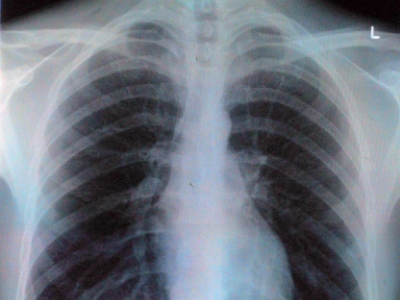Bacterial Pneumonia

Pneumonia is a common lung infection where the air sacks of the lungs are inflamed. These sacs may also be filled with cellular debris, pus, and fluid.
Bacterial Pneumonia may involve just one small section of the lung or might include both lungs. The condition can make it tough for your body to get sufficient oxygen to your blood which may cause cells not to function well.
This type of pneumonia can be mild or serious. The severity of your condition may depend on:
- Your age
- Overall health
- The strength of the bacteria
- How quickly you are diagnosed and treated
- If you have other diseases
What causes Bacterial Pneumonia and who is at risk of developing the condition?

Bacterial pneumonia is caused by bacteria that enter the lungs and multiply. It can develop independently or as a result of another illness, such as a cold or the flu.
People who are at higher risk for pneumonia include:
- Smoking
- Living or working in a hospital setting or nursing facility
- Working in an environment with a lot of pollution
People who have these conditions may also be at an increased risk for pneumonia:
- Weakened immune system due to illness or medications
- Recent viral respiratory infections, such as the flu
- Chronic lung diseases
- Difficulty swallowing due to neurological conditions such as dementia or stroke
Doctors classify bacterial pneumonia based on whether it developed inside or outside a hospital.
What are the symptoms of Bacterial Pneumonia?
The most common symptoms of bacterial pneumonia are:
- Stabbing chest pain that worsens when coughing or breathing
- Sudden onset of chills severe enough to make you shake
- Cough with thick yellow, green, or blood-tinged mucus
- Fever of 102-105°F or above
- Other symptoms that may follow include:
- Breathlessness or rapid breathing
- Headache
- Muscle pain
- Lethargy or severe fatigue
- Loss of appetite
- Sweating
- Moist, pale skin
- Confusion, especially among older persons
Older adults will share all the symptoms with younger adults, but are much more likely to experience dizziness and confusion. Older adults may also be less likely to have a fever.
How to diagnose Bacterial Pneumonia?

During your doctor’s first visit, he or she will ask about your medical history and perform a physical exam. A stethoscope will be used to listen to your lungs for abnormal crackling or bubbling sounds that could indicate pneumonia.
If pneumonia is suspected, your doctor may recommend the following tests:
- Sputum test
- Pulse oximetry
- Chest X-ray
- Blood tests
If you’re older than age 65 and have serious symptoms or health conditions, your doctor might order additional tests. These may include:
- Pleural fluid culture
- CT scan
Treatment and Medication for Bacterial Pneumonia
As part of pneumonia treatment, the infection must be cured and complications avoided. In most cases, community-acquired pneumonia can be treated at home with medication. Symptoms usually go away within a few days or weeks, but the tiredness can last for a month or more.
Medications recommended for the treatment of Bacterial Pneumonia include:



